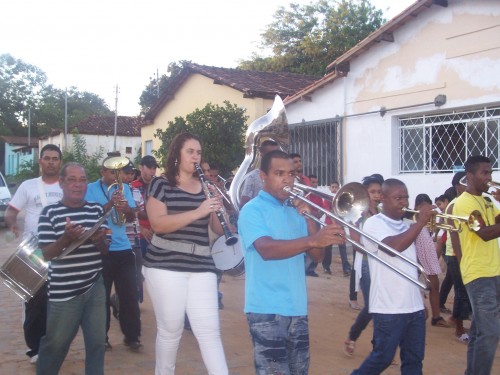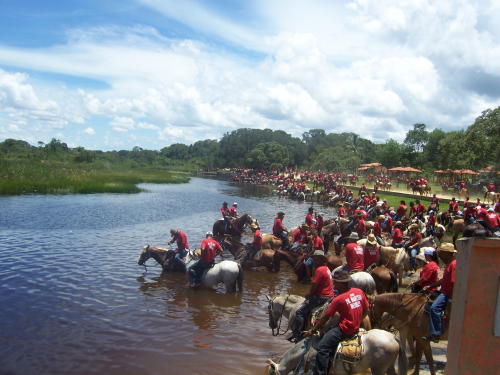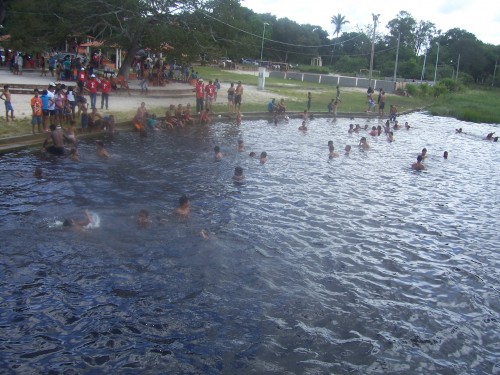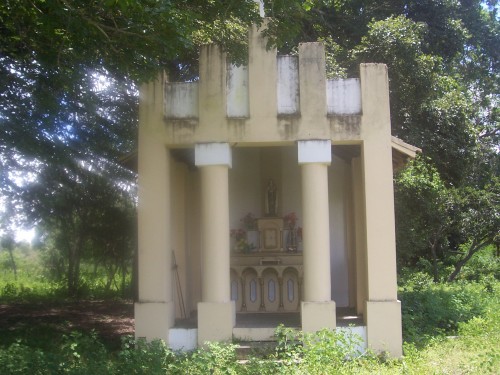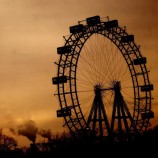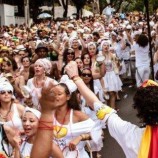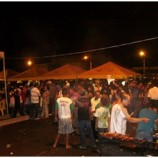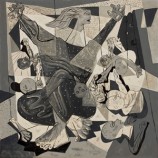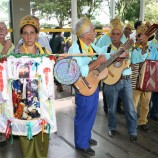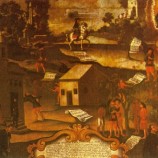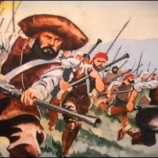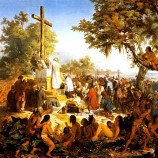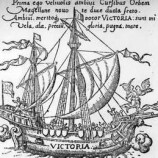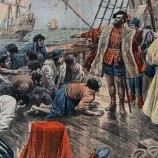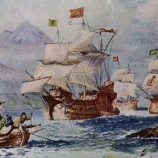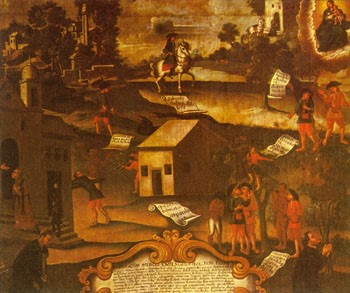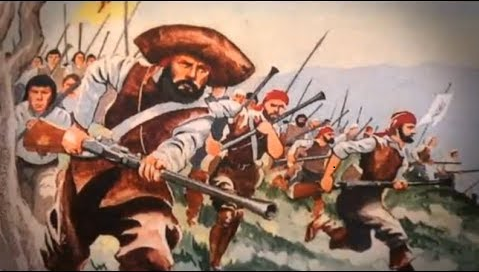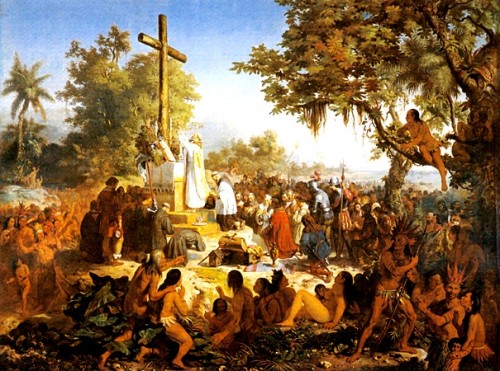IV – São Romão: Religious and Cultural Traditions
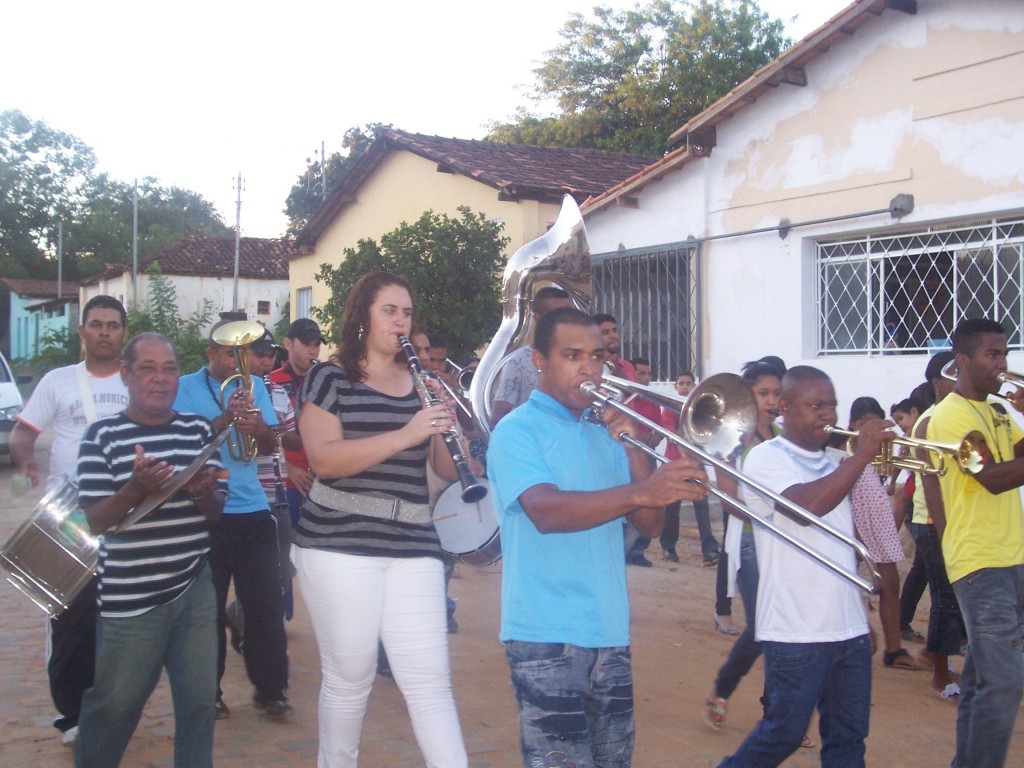
From the series Religious Pilgrimages in the Great Backlands
The city of São Romão, located in the northern region of the state of Minas Gerais, situated on the banks of the Rio São Francisco and part of the Urucuia Great Backlands tourist circuit, is the birthplace of age old religious traditions and whose people are the holders of an unparalleled cultural heritage of diverse expressions of faith lived in popular religiosity. According to historians, it was considered one of the most important cities in the Mineiro backlands during the 18th century when it was the scene of violent battles waged between wanted men from all over Brazil and Portugal and the nomadic Indians, local tribes and runaway slaves. Soon after, it was known for its unconformity regarding the colonial yoke when the revolution exploded in the backlands, which was the first revolt held against the Portuguese crown and that transformed the small town into a fighting ground. Its first habitants were the Caiapós Indians who were also the former inhabitants of the island facing the city and who, according to historical records, were chased off of the lands and had their culture and traditions decimated by the colonists.
In time, São Romão became the stage for many expressions of the people’s religious faith. The small town’s greatest patrimony is its cultural legacy handed down by the people’s indigenous, African and Portuguese ancestors. Perhaps attributed to the early colonists and evangelizers, there began a great devotion to Saint Anthony, who for generations was the town’s patron saint. Today, among the town’s many traditional religious celebrations, the feast of Our Lady of the Rosary is certainly worth mentioning. The centennial celebration takes place at the traditional Church of the Rosary in the beginning of October, opening with its kingdom traditions. The King and Queen parade in procession through the town’s streets in a majestic tribute to the mother of the Black peoples, Our Lady of the Rosary.
Every year the towns peoples’ and visitors’ hearts leap with enthusiasm and excitement in anticipation for the festivities to come, which range from the allegorical movements of horse parades to the liturgical celebrations of the raising of the mast and other processions. These festivities are always animated by the musical group Sete de Setembro, who bring a special joy to the morning sunrises and accompany all of the acts throughout the event. Another noteworthy allegory is the fun filled folkloric dance of the congado and the caboclos. The congado is composed of a group of dancers dressed into character, with drums and tambourines, animating the whole crowd with their playfulness and songs, among them are some which retell of the conflicts between the black people and society at the time, including that with the official church.
The dance of the Caboclos is a trip back through time, dressed into character with indigenous petticoats and headdresses, they sing and dance throughout the processions and parades along the streets of the town, vibrating their bows and arrows they revive the memory of the area’s first inhabitants.
The horse parade, in a reverential tribute to the protector of the black peoples of the backlands, circles around the church in a rousing allegory, with their animals decorated in vibrant red and green colors and accompanied with the sound of riding bells, followed by the surprising appearance of the comical and wacky clown Zé Bode, making everyone roar with laughter. After the presentation, a festive ceremony is held at the residences of the King and Queen where delicious sweet confections are served, made mostly of native savanna fruits.
São Romão also cultivates the traditions of Folias de Reis (Three King’s Day), of São Gonçalo do Batuque and of Boi de Reis, another folkloric dance. The batuque, a dance of African origin characterized by its fast hip movement, clapping and tribal tap, accompanied by rich rhythmic singing played with a musical instrument called a “roncador”, was immortalized by the historical figure Maria do Batuque who for many years also commanded Boi de Reis, carrying hundreds of people through the town’s streets jubilating the January nights.
Another feast which is growing to unprecedented proportions both in public and infrastructure is the horse parades of São Sebastião, lead by the young lawyer Dr. Marcelo Meireles. On every 20th of January, the horse parade of São Sebastião joins together hundreds of men and women horseback riders from around the county and from all over the region.
It’s worth noting that according to some versions given by scholars, the horse parades have their beginnings in the domestication of horses throughout all of Europe, North Africa and especially in the Middle East. In Brazil, horseback riding was introduced initially as a sport and caught on rapidly in many towns in the interior of the country, bringing more and more adepts to this practice. Today the horse parades are held for many reasons, religiousness, ecotourism, sport, civic, or just plain recreation. In Northern Minas Gerais, for religious reasons, the horse parades fit the people’s fancy, quickly reaching all social classes and age groups, from the political leaders to the simplest of homemakers. Numerous horse riding processions happen throughout the year parting in direction of the traditional pilgrimage centers found in many different regions as well as during the feasts of popular saints.
The horse parade of São Sebastião in São Romão always begins at the Bus Station Plaza at the break of dawn with the reception of the horse riders who are to form the entourage. The image of the saint is carried at the front until the arrival at the resort Riacho da Ponte, where shows are played by regional artists and the grand feast itself is served with all its plentiful food and drink, always gratuitous. The festivities continue the next day at the parish center with the raising of the Mast, mass, procession and the closing of the festivities with the choosing of the next year’s hosts.
In the end, whether the motivation is of devotion, tourism, or just for fun, the horsemen of São Sebastião dream of the arrival of the day of the feast for their chance to ride joyously through the town’s streets and roads, participating in this beautiful experience of human togetherness.
São Romão also accounts for the most beautiful recreational area in the entire region. Its resort is situated on the banks of the Vereda do Riacho da Ponte, one of the area’s tourist attractions which draw in thousands every year during the days of the festivities and on holidays with its crystal clear waters. A truly special place for going on vacation, spiritual retreats and ecotourism. It will become a true oasis when, through educational campaigns in partnership with the populace and public administration, we can attend to the environmental preservation and protection of this precious wealth.
Historically, Riacho da Ponte was the community of choice for the realization of many sacramental celebrations. Catholics would come in from many different regions of the extensive county boundaries to participate in mass, go to confession, christenings, weddings, to pay promises and take first communion in the majestic little chapel dedicated to Santa Terezinha, which at the moment is in need of reforms.
Lastly, dear reader, I am of the opinion that São Romão is without a doubt a millennial stage of grand religious manifestations of unparalleled cultural and historical value. God willing that the popular religious culture continues full of life, in face of all the hedonistic fads and consumerists of the mainstream media seeking compliant audiences.
Related Articles


